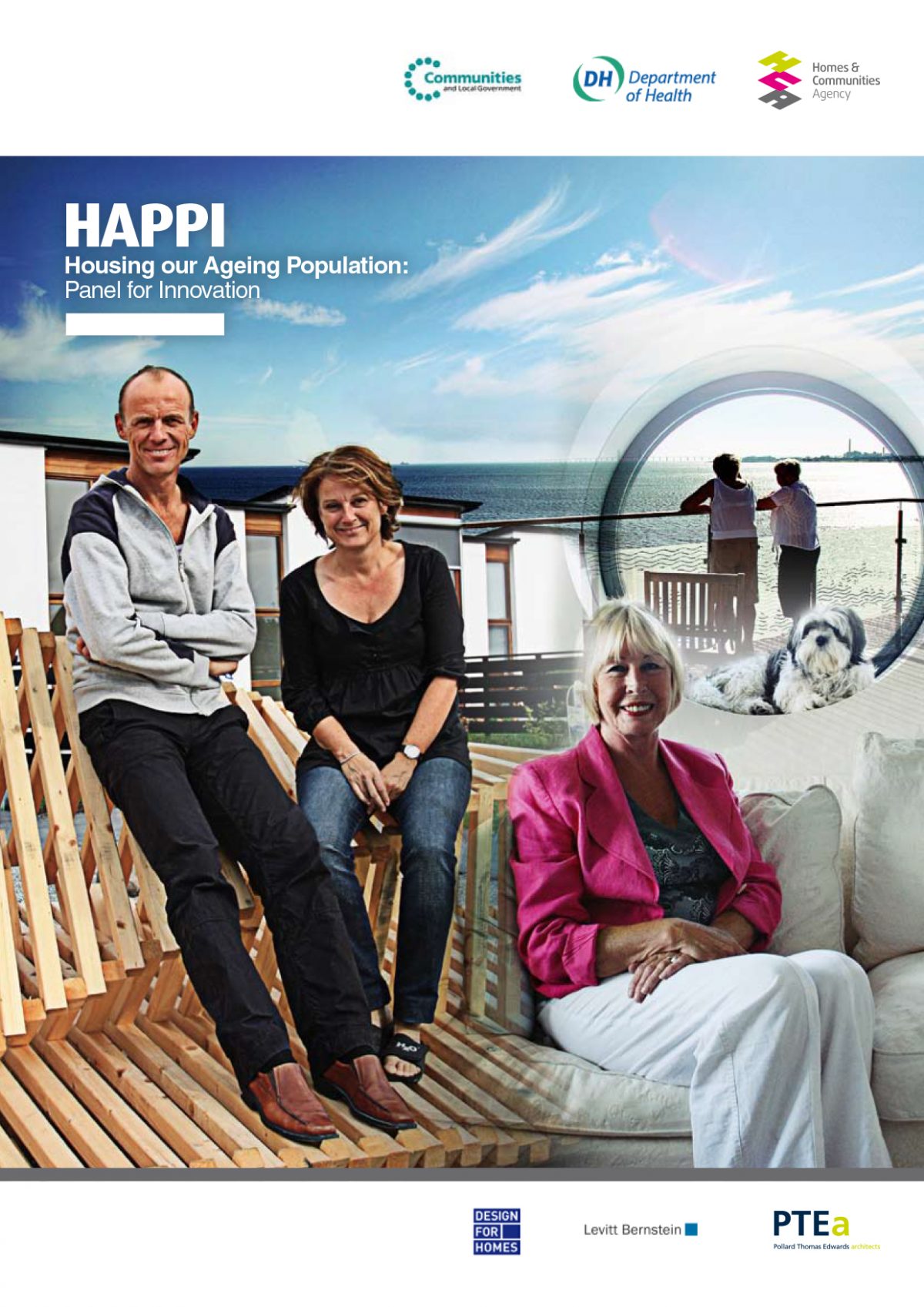The authors make the following recommendations for design of housing for older people:
- New retirement homes should have generous internal space standards, with potential for three habitable rooms and designed to accommodate flexible layouts.
- Care is taken in the design of homes and shared spaces, with the placement, size and detail of windows, and to ensure plenty of natural light, and to allow daylight into circulation spaces.
- Building layouts maximise natural light and ventilation by avoiding internal corridors and single-aspect flats, and apartments have balconies, patios, or terraces with enough space for tables and chairs as well as plants
- In the implementation of measures to ensure adaptability, homes are designed to be ‘care ready’ so that new and emerging technologies, such as telecare and community equipment, can be readily installed.
- Building layouts promote circulation areas as shared spaces that offer connections to the wider context, encouraging interaction, supporting interdependence and avoiding an ‘institutional feel’, including the imaginative use of shared balcony access to front doors and thresholds, promoting natural surveillance and providing for ‘defensible space’.
- In all but the smallest developments (or those very close to existing community facilities), multi-purpose space is available for residents to meet, with facilities designed to support an appropriate range of activities – perhaps serving the wider neighbourhood as a community ‘hub’, as well as guest rooms for visiting friends and families.
- In giving thought to the public realm, design measures ensure that homes engage positively with the street, and that the natural environment is nurtured through new trees and hedges and the preservation of mature planting, and providing wildlife habitats as well as colour, shade and shelter.
- Homes are energy-efficient and well insulated, but also well ventilated and able to avoid overheating by, for example, passive solar design, the use of native deciduous planting supplemented by external blinds or shutters, easily operated awnings over balconies, green roofs and cooling chimneys.
- Adequate storage is available outside the home together with provision for cycles and mobility aids, and that storage inside the home meets the needs of the occupier.
- Shared external surfaces, such as ‘home zones’, that give priority to pedestrians rather than cars, and which are proving successful in other countries, become more common, with due regard to the kinds of navigation difficulties that some visually impaired people may experience in such environments.
Author: Housing our Ageing Population Panel for Innovation
Publication date: 2009

